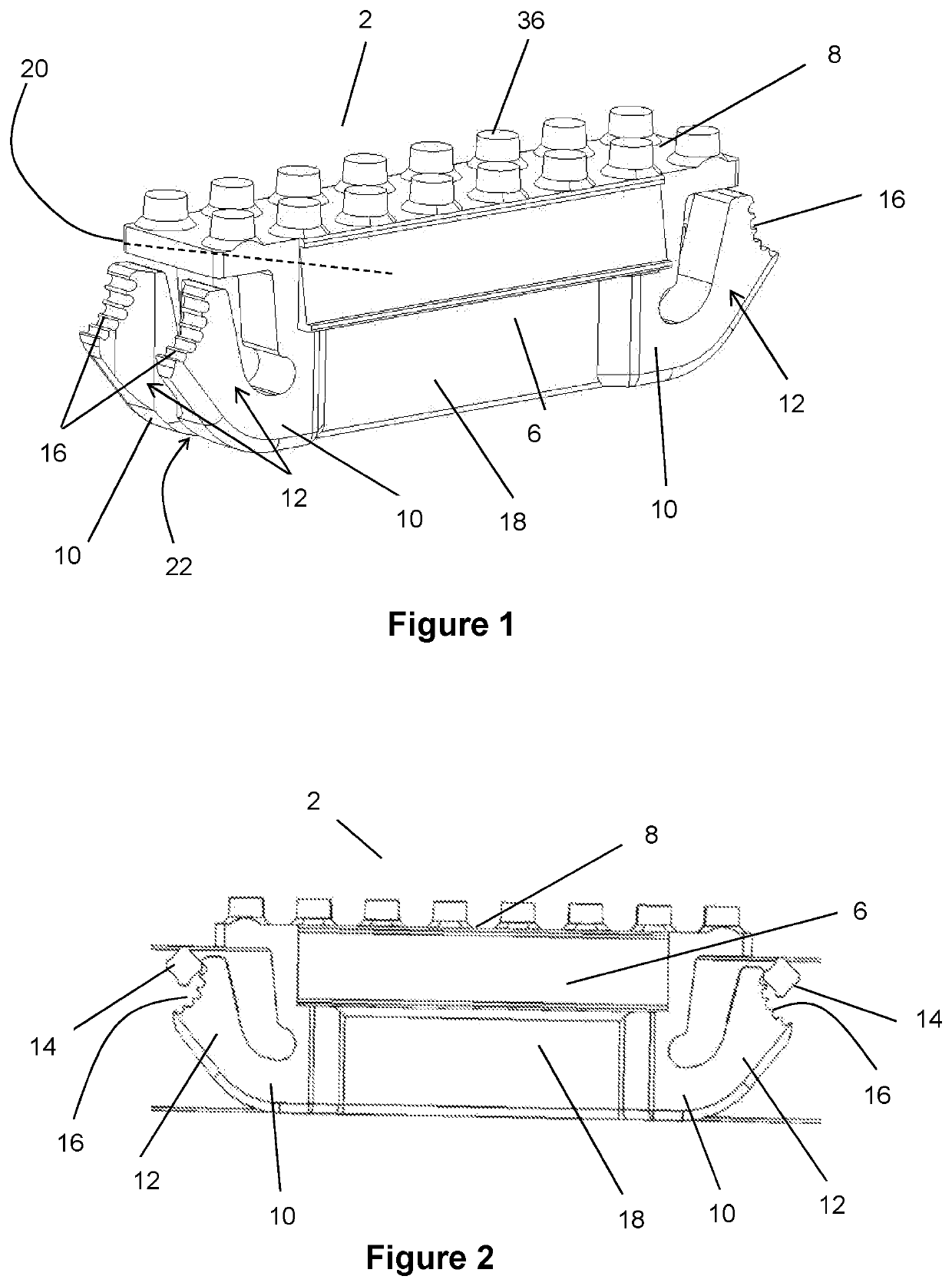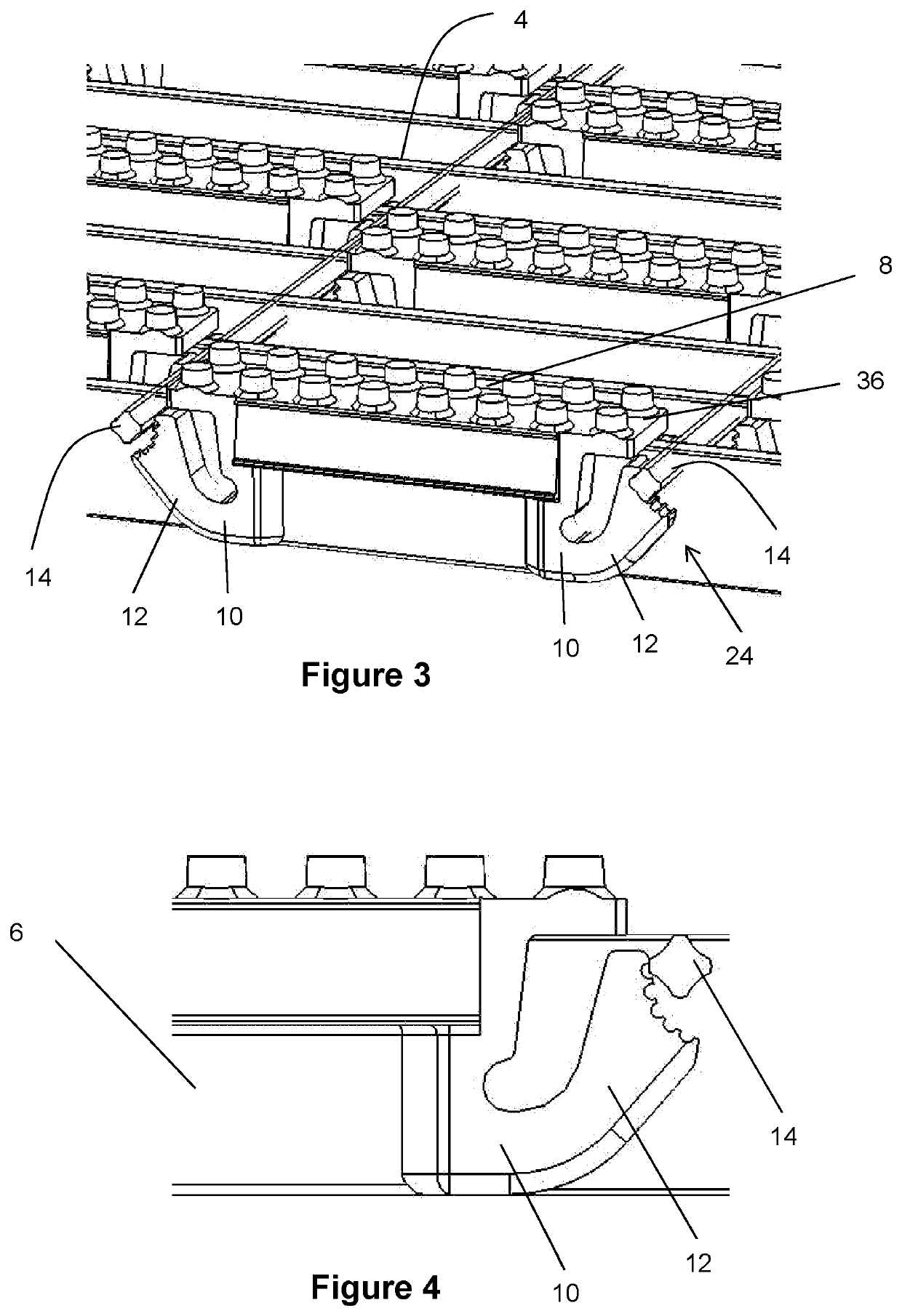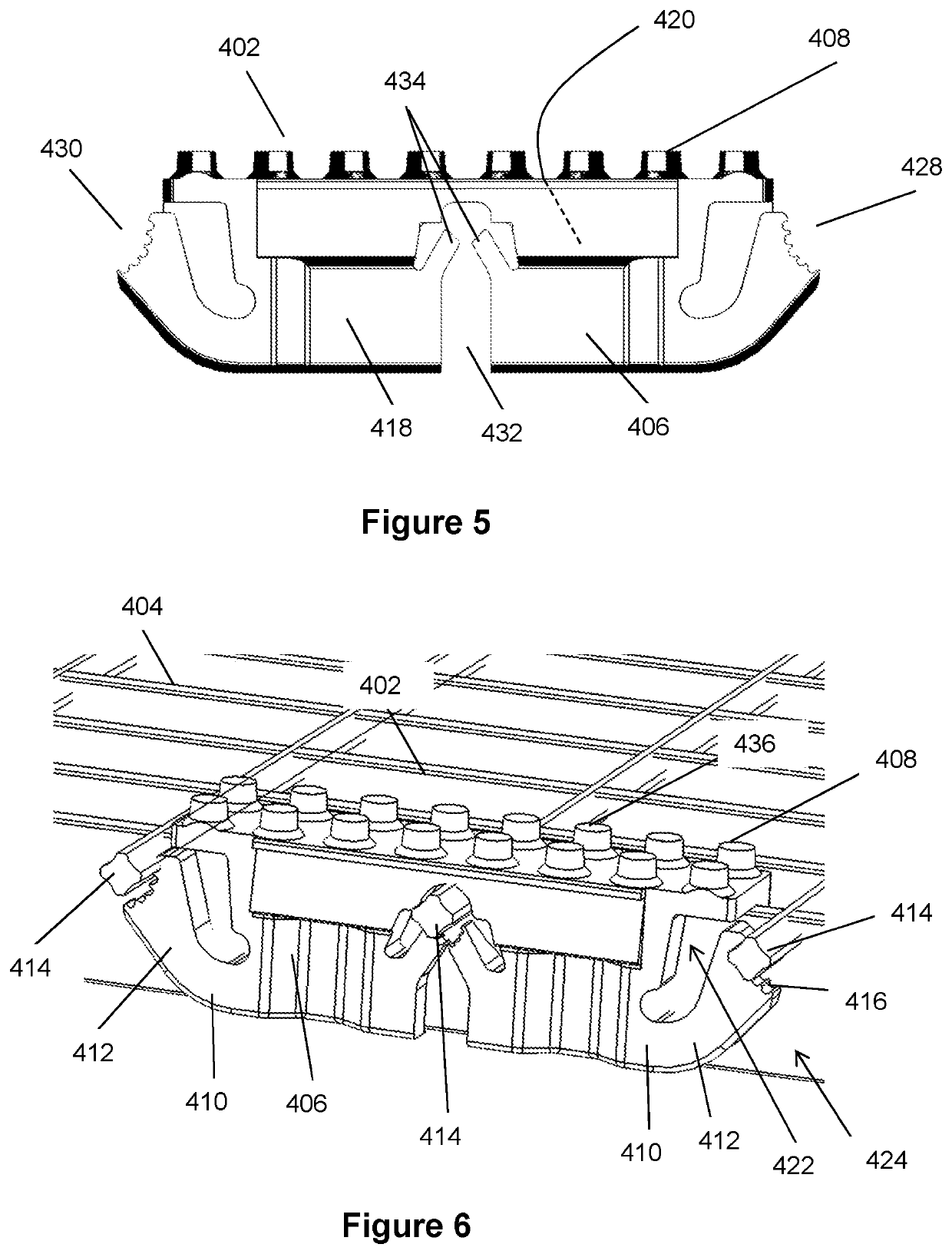Safety Device
a safety device and a technology for stairways, applied in the direction of stairway-like structures, building components, paving details, etc., can solve the problems of tabs projecting outwards, easy to be affected by vertical and horizontal movement/play, and the option is not easily applicable, so as to achieve the effect of being more robust and convenient to us
- Summary
- Abstract
- Description
- Claims
- Application Information
AI Technical Summary
Benefits of technology
Problems solved by technology
Method used
Image
Examples
Embodiment Construction
[0039]FIGS. 1 to 13 show seven versions of the attachment device. In each version shown, the device 2, 402, 502, 602, 702, 802, 902, 1002 has at least one point of flexure 10, 410, 510, 610, 710, 810, 910, 1010 with an arm 12, 412, 512, 612, 712, 812, 912, 1012 extending from the point of flexure 10, 410, 510, 610, 710, 810, 910, 1010, whereby the arm 12, 412, 512, 612, 712, 812, 912, 1012 is moveable about the point of flexure 10, 410, 510, 610, 710, 810, 910, 1010. Each version of the device 2, 402, 502, 602, 702, 802, 902, 1002 is able to be secured to a pathway (for example a grate shown in FIGS. 3, 6 and 11 as 4, 404, 804) through the engagement of the arms 12, 412, 512, 612, 712, 812, 912, 1012 with a component of the pathway.
[0040]FIGS. 1 to 4 and 7 show an embodiment of the attachment device 2 for attachment to a pathway 4 comprising a body 6 having: a top surface 8 for receiving foot traffic thereon. The embodiment of FIGS. 1 to 4 and 7 has four points of flexure 10, with e...
PUM
| Property | Measurement | Unit |
|---|---|---|
| potential movement | aaaaa | aaaaa |
| friction | aaaaa | aaaaa |
| width | aaaaa | aaaaa |
Abstract
Description
Claims
Application Information
 Login to View More
Login to View More - R&D
- Intellectual Property
- Life Sciences
- Materials
- Tech Scout
- Unparalleled Data Quality
- Higher Quality Content
- 60% Fewer Hallucinations
Browse by: Latest US Patents, China's latest patents, Technical Efficacy Thesaurus, Application Domain, Technology Topic, Popular Technical Reports.
© 2025 PatSnap. All rights reserved.Legal|Privacy policy|Modern Slavery Act Transparency Statement|Sitemap|About US| Contact US: help@patsnap.com



